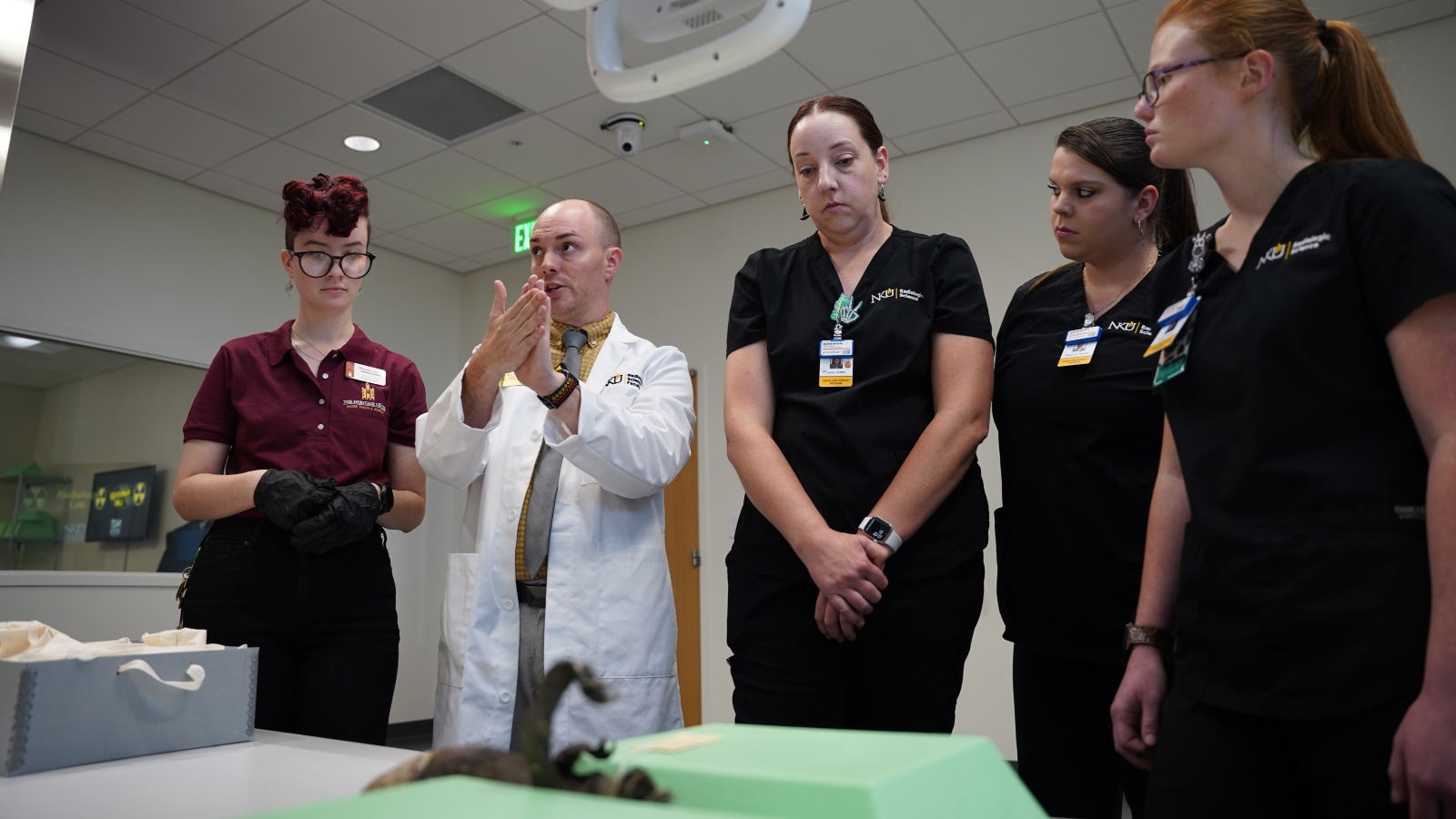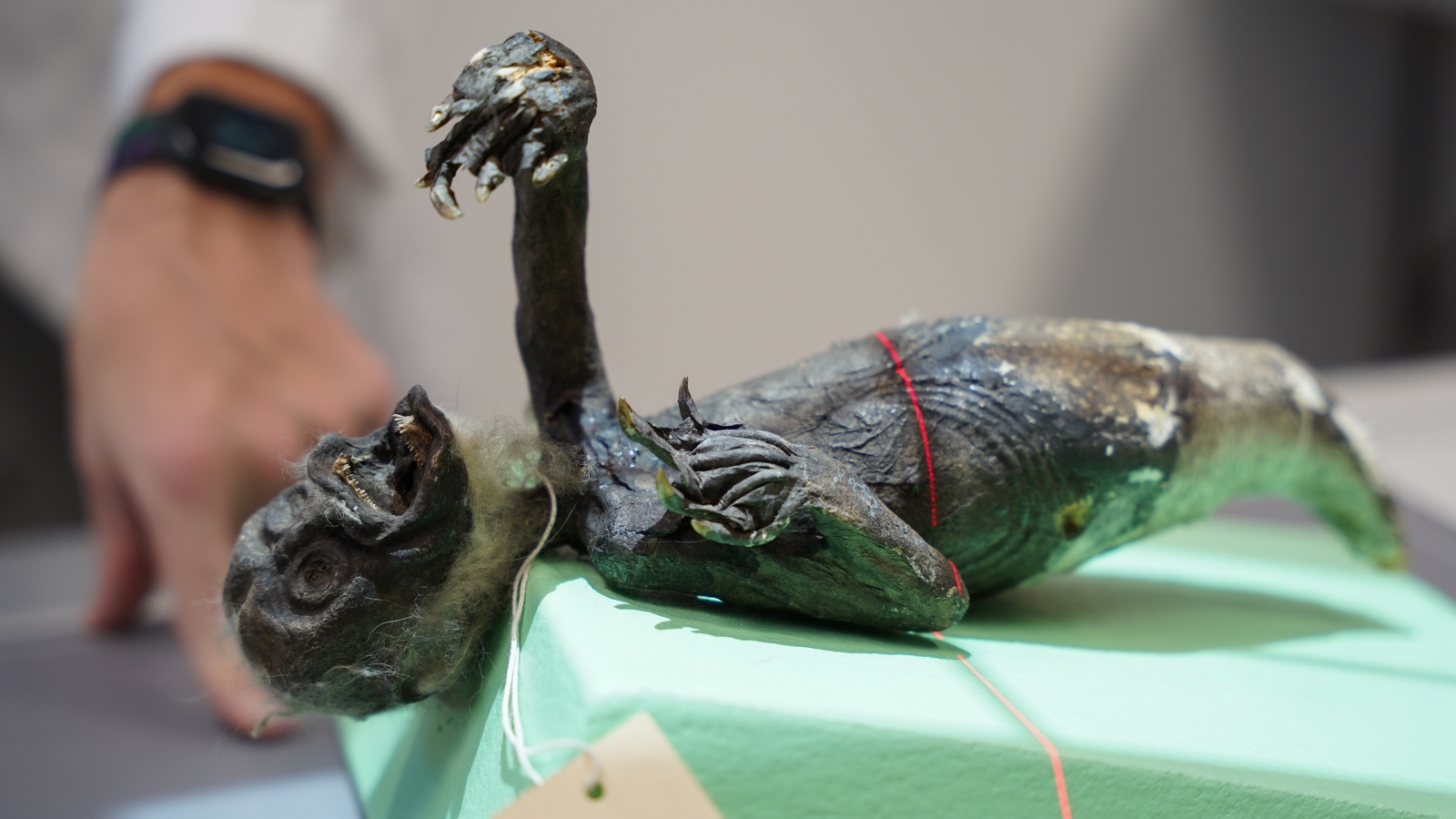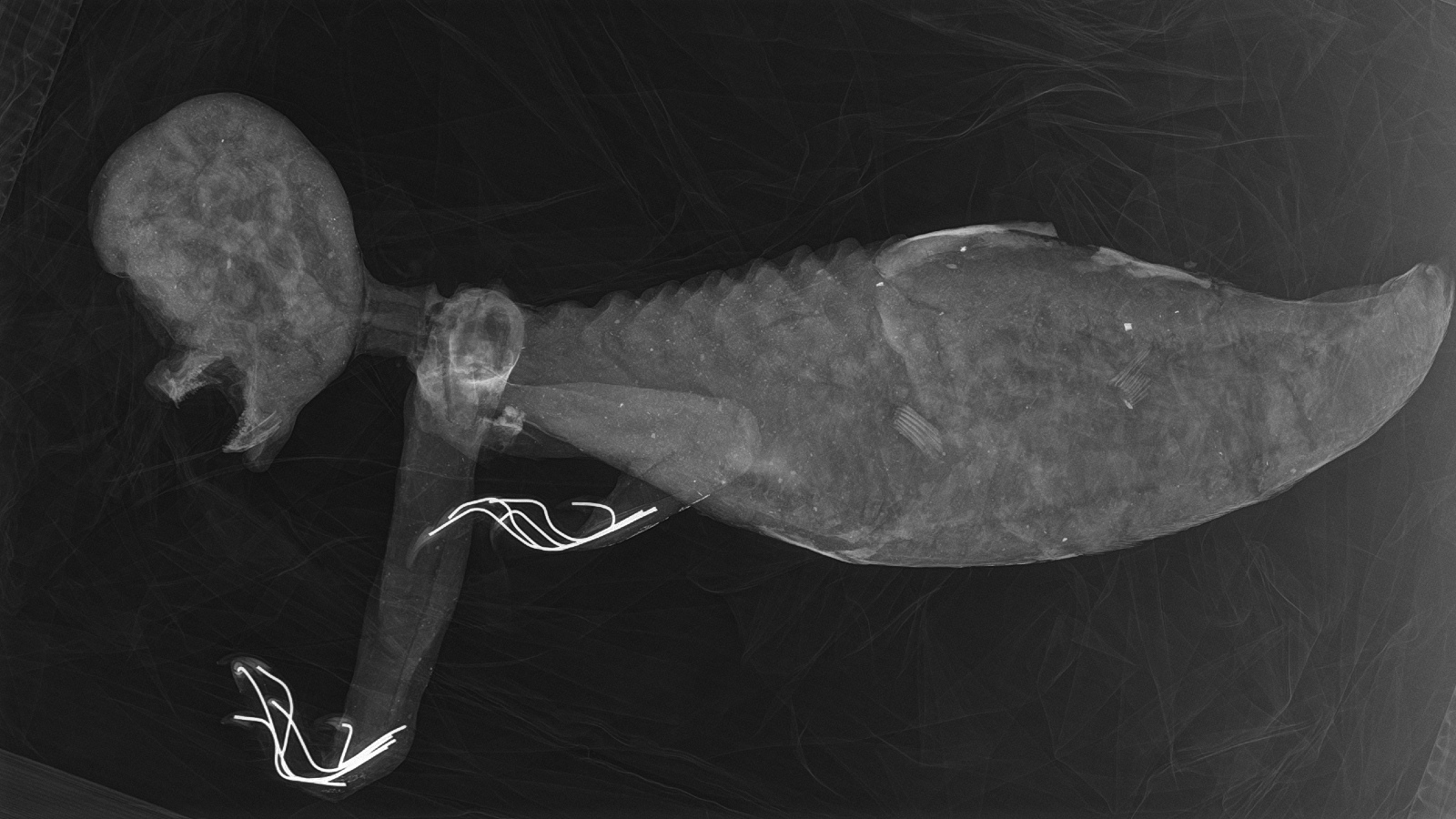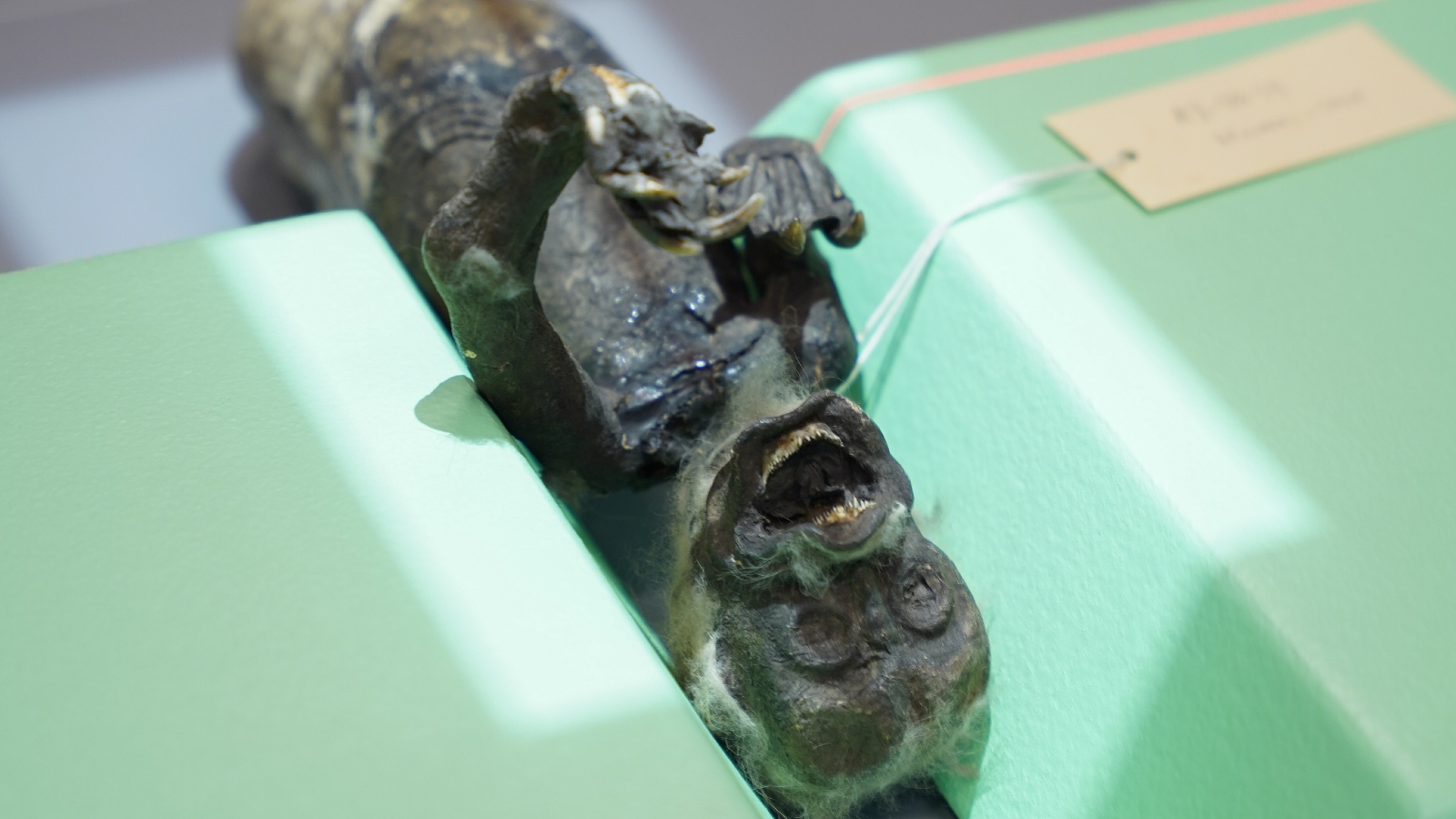Haunting 'mermaid' mummy from Japan is a gruesome monkey-fish hybrid with 'dragon claws,' new scans reveal
Scientists have scanned the mummified remains of a supposed "mermaid" from Japan. The initial results suggest it is a horrifying mix of fish, monkey and lizard parts.
A mysterious, malevolent-looking mermaid mummy that was brought back to the U.S. from Japan more than 100 years ago appears to be a mix of fish, monkey and lizard parts that have been joined together like Frankenstein's monster, initial scans suggest.
The haunting mummy, which is around 11.5 inches (29 centimeters) long, is known as the "Fiji mermaid" due to its similarities with an object of the same name supposedly acquired from Fiji by controversial showman P.T. Barnum in the 1840s. The mummy was purchased in Japan by an American naval officer who donated it to the Clark County Historical Society in Springfield, Ohio, in 1906. Documents supplied to the society with the mummy suggest it dates back to the mid-1800s.
Now, for the first time, researchers have investigated the mermaid's identity by carrying out X-ray and CT scans on the disheveled remains.
"This allowed us to see [the mummy] in almost every dimension in the hopes to see what was inside it," project leader Joseph Cress, a radiographer at Northern Kentucky University, told Live Science.
Related: Are there any mythological creatures that haven't been debunked?
The initial investigation found that the mummy appears to be made from the head and torso of a monkey sewed onto the decapitated body of a fish, while the mermaid's hands are the clawed legs from a lizard — most likely a Komodo dragon (Varanus komodoensis), Cress told Live Science.
The scans also revealed a pair of wooden stakes inside the remains — one running from head to tail and another across the shoulder blades — which were presumably added to keep the creature intact, Cress said.
Get the world’s most fascinating discoveries delivered straight to your inbox.
The researchers are currently trying to reconstruct a more detailed model of the mermaid and its individual parts from their scans. Once the models are complete, the team plans to send them to zoos and aquariums to help identify the components on a species level.
This is not the only mummified mermaid to have undergone intensive scans recently.
In March 2022, researchers analyzed a similar specimen that was unearthed in a hidden box in a Japanese temple. Researchers initially expected that this mermaid, which was 12 inches (30.5 cm) long and dates to the mid-1700s, was also a monkey-fish hybrid. But subsequent scans this February revealed that the mummy was predominantly made from cloth, paper and cotton, painted with sand and charcoal and held together by metal pins. Various animal parts, including mammal hair and fish skin, were stuck to the outside of the doll.



Both mermaids most closely resemble "ningyo" — mythical fish-like creatures with human heads. In Japanese mythology, a woman is fabled to have lived for 800 years after eating one of these fictional beasts, and so the creatures became a symbol of longevity. It is therefore likely that fishers made the cryptid concoctions to sell them to wealthy people seeking to prolong their lives, Live Science previously reported.

Harry is a U.K.-based senior staff writer at Live Science. He studied marine biology at the University of Exeter before training to become a journalist. He covers a wide range of topics including space exploration, planetary science, space weather, climate change, animal behavior and paleontology. His recent work on the solar maximum won "best space submission" at the 2024 Aerospace Media Awards and was shortlisted in the "top scoop" category at the NCTJ Awards for Excellence in 2023. He also writes Live Science's weekly Earth from space series.
 Live Science Plus
Live Science Plus








